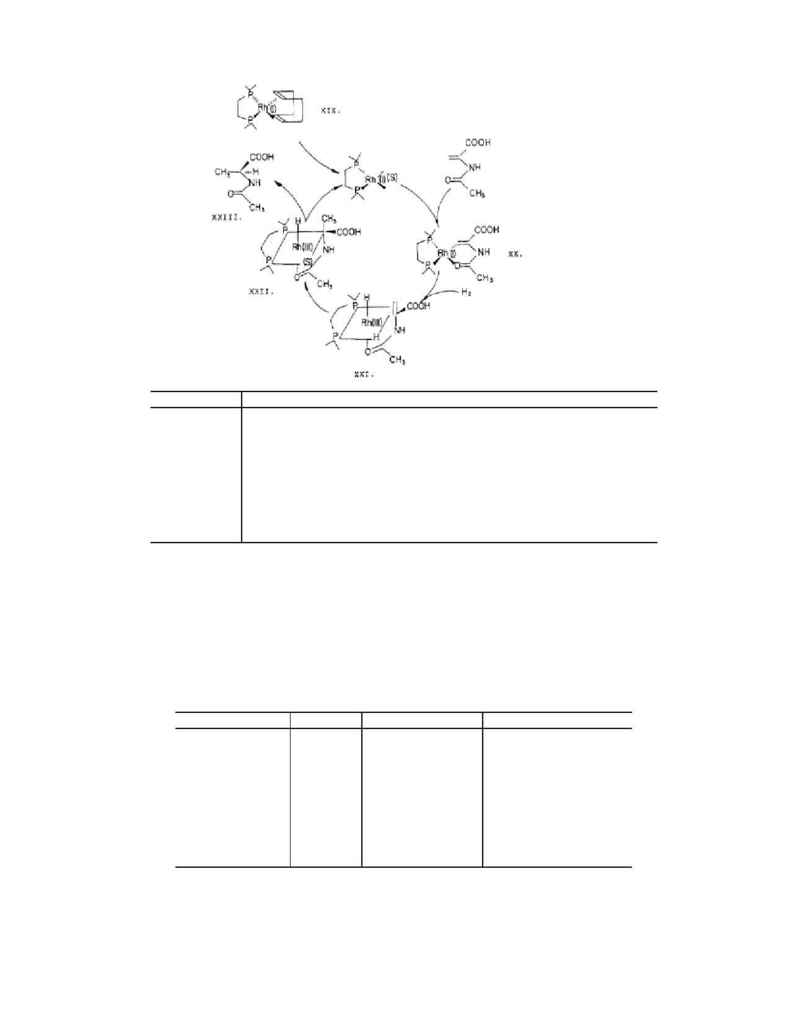Kolmetz.com Chem review Page 6

6
Satge Mechanism
XIX
The catalyst precursor in presents of H
2
losses cyclooctadiene, formed
solvated complex containing no H
2
XX
Substrate comes in forming square-planar rhodium(I) complex with the
diastereoisomers derived from the prochiral olefin in rapid equilibrium as
compared with the hydrogenation rate
XXI
H2 oxidatively adds to make octahedral rhodium (III) complex
XXII
The dihydride immediately converts to half-adduct stage
XXIII
Collapse to product and regeneration of solvated complex
Figure 2. Mechanism Summary
CURRENT AND FUTURE DEVEPLOPMENT
The commercial success of the enantioselective catalysis using metal complex is listed in Table 3.
Table 3. Commercial applications of enantioselective catalysis using metal complexes
(Nugent et al: 1993)
Company
Metal
Reaction type
Ultimate product
Monsanto Rh
Hydrogenation
L-Dopa
Sumitomo Cu
Cyclopropanation
Cilastatin
Anic, Enichem
Rh
Hydrogenation
L-Phenylalanine
J. T. Baker
Ti
Epoxidation
Disparlure
ARCO Ti
Epoxidation
Clycidols
Takasago Rh
Rearrangement
L-Menthol
Merck B
C=O
reduction
MK-417
(opthalmic)
E. Merck
Mn
Epoxidation
Antihypertensive
Takasago Ru
Hydrogenation
Carbapenem
Among the processes, asymmetric hydrogenation is at utmost important where more than 30% of the
chemical synthesis is from homogeneous asymmetric hydrogenation. One problem for broader industrial
Product
Substrate
Catalyst
precursor
